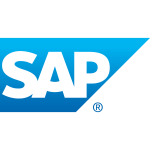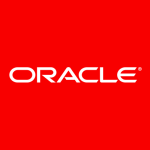
MuleSoft Anypoint Platform Primary Use Case
GO
Greg O
Senior Validation Engineer at a mining and metals company with 10,001+ employees
MuleSoft Anypoint Platform was purchased through a lot of third-party vendors that we connect to. It's more of an integration-based solution. We have different connections; my work involves more connectivity between ERPs and data storage such as Azure or AWS from SAP. That's what I use for that integration platform.
View full review »PD
PietroDell'Erba
Solutions Architect at a manufacturing company with 10,001+ employees
I am involved in architectural design using MuleSoft Anypoint Platform.
View full review »SV
Satish Vardhani
Senior Consultant at a tech services company with 11-50 employees
MuleSoft Anypoint Platform is a kind of API platform. We use it to manage and maintain our APIs in terms of content capabilities, monitoring, and as a gateway. It allows deploying applications into runtime, integrating with data, and building code around data integration.
View full review »Buyer's Guide
MuleSoft Anypoint Platform
December 2025
Learn what your peers think about MuleSoft Anypoint Platform. Get advice and tips from experienced pros sharing their opinions. Updated: December 2025.
879,425 professionals have used our research since 2012.
I can describe the use case for MuleSoft Anypoint Platform by explaining what processes people mostly use the product for.
MuleSoft Anypoint Platform can be recommended for all environments - small, medium, and enterprise-level - because they have the facilities and features which small enterprises need. Organizations need to evaluate based on the pricing since they have started with consumption-based pricing nowadays. The effectiveness of this model is still being determined as they are moving from vCore-based pricing to consumption-based pricing. This is something small, mid, and large enterprises need to consider.
View full review »We primarily use MuleSoft for integrations and API management. This involves pragmatic usage of API-led connectivity and managing complex integrations.
View full review »Mule Anypoint Platform is used as an integration tool to integrate applications and for data transformations. It is mostly used as an integration tool to connect multiple systems, and it comes with pre-built connectors to allow users to connect with multiple systems, like SAP, Salesforce, or any of the message queuing systems, IBM MQ or Apache ActiveMQ. With Mule Anypoint Platform, connecting multiple systems, integrating them, and transferring data from one system to another is easy. The tool helps users have point-to-point connections and achieve an overall integration.
I use the solution in my company for API development and integration.
We performed a patient account integration between our CRM and our ERP. We were managing order integration between the systems. We also manage RMAs between the systems. We have an integration with a specialty pharmacy. We used the tool to capture account and order information from our external partners.
View full review »The solution is used in many projects. I'm an IT consultant. I use the tool when there's a need for asynchronous messaging.
View full review »So what we are trying to do is help a customer create a platform where they can integrate multiple business applications. Previously, they were using point-to-point integrations, but now they want to leverage Mule Anypoint Platform as the integration layer. They have about 60+ applications and close to 300+ endpoints that they want to connect through Mule. They are gradually migrating from SnapLogic and Workato, including data integration currently handled by Talent, to Mule as the unified platform. Our role is to assist in building these integrations. We are retrofitting some of the existing ones into Mule and ensuring a smooth transition from other integration solutions to MuleSoft. Additionally, for new businesses, they plan to build integrations directly on top of Mule Anypoint Platform.
View full review »I started using it as a developer. Essentially, we use it for application integration. For example, in one organization where I worked, we had an SAP ERP application, and several other applications were integrated with it. It acts as an integration layer for SAP, leveraging APIs rather than traditional methods like SAP's API for scheduled jobs. This allowed us to integrate ERP applications, document management systems, and web applications more efficiently.
View full review »The primary use case associated with the product is that it helps enable integrations and expose them to the front-end channels. Our company is in the process of evaluating products which can seamlessly integrate with our head office and back office systems. Also, my company has to do you with some use cases associated with the front-end part. Basically, my company is probably planning to extend the services and products in our channels.
With the Mule Anypoint Platform, we have addressed several integration scenarios. For example, when integrating systems like Workday, Oracle, ADS, and QAD, Mule Anypoint Platform has significantly improved API connectivity using its experience API system.
In another case, in the healthcare industry in North America, we faced issues with VDA transactions that occurred over two weeks. We migrated to Mule Anypoint Platform-based APIs, which included scheduling and API connectivity.
View full review »KB
Khedkar Bhagyashree
Technical Lead at a retailer with 201-500 employees
We mostly use it for reprocessing messages in case of failures within asynchronous flows across millions of applications.
We use it for integrating different applications within our infrastructure.
View full review »AB
Artur Bielobrov
MuleSoft Developer at a computer retailer with 11-50 employees
Mule Anypoint Platform is used for the integration of different services or customer databases with Microsoft solutions.
View full review »SR
Sedat Reyhan
Head-IT Common Tools & Integration Services at a wholesaler/distributor with 10,001+ employees
We are a global company, and Mule Anypoint Platform is at the center of all our e-commerce applications.
View full review »AT
AshishTiwari1
Architect at a tech vendor with 11-50 employees
Our company's clients are all from different domains. We use the platform for integration and API management.
View full review »AA
Ankur_Agarwal
associate director at a tech vendor with 10,001+ employees
We are using the Mule Anypoint Platform for multiple clients. One of our clients is the largest retail chain in the US and we are using the solution for integration with E-commerce and for the largest logistics and cloud company in the US for integrating their transport management system. Additionally, we have many manufacturing organizations, where we are integrating their legacy applications, SaaS-based application, SAP database, et cetera.
We're using Anypoint MQ for messaging, in different types: from SAP to third party systems, global third party systems, etc. There's a hundred of them.
View full review »We are an integrator for Anypoint MQ, based on Mule 4.3, with several active customers. The solution is typically delivered by cloud and there are differing kinds of use cases that we see.
If there is an event-driven architecture in place, then we will use Anypoint MQ to connect the different APIs together (such as the Experience APIs, Process API, and the System API) so as to enable a seamless process while minimizing data loss. That's the main use case seen in our work.
KB
KISHOREBEELA
Senior Integration Consultant at a tech services company with 1-10 employees
We transfer data between systems. We are to save the data to make the communication between systems synchronous. We use Anypoint MQ for making the communication synchronous. The source integration component will place the data into Anypoint MQ, and the target company will take it from there.
View full review »The solution enables searching, publishing, consumption, and subscription of APIs via a portal.
We are using the solution for building business logic. It's like having a particular private cloud service that we can host on our premises, which is less cost-effective than Microsoft Logic Apps. It provides storage and data integration in a very good manner.
View full review »The solution is a middleware integration tool. It's a deployment part where you deploy your Mule applications and also use Anypoint Studio.
It's like other integration tools like TIBCO.
View full review »Our company is working with a client to create standardization or uniformity across departments and domains.
Every domain operated on a pilot approach with its own set of standards and technology. There were multiple point form connections and API discoverability for assets.
We analyzed the environment and found there were issues with transferring master data from SAP to downstream systems. There was an iDOC on the SAP level which contained a batch master for new material and served as a point-to-point connector for downstream systems such as SAP to Salesforce, Informatica, or other systems.
We recommended that material master data should be implemented in an observable or pub/sub approach. Upgrades or changes to the material master should be generated from the CP side and sent to the solution for dissemination to downstream systems. This eliminates bad jobs and is a real-time approach to point-to-point connections.
There were also many APIs built in different technologies throughout the organization, with no standard API management capabilities or governance to enforce policies, security, or best practices. We recommended Universal API Management for API registrations because it allows any type of technology or platform and serves as a single point for discoverability, enforced policies, governance, and traffic.
View full review »GS
Gautam-Sharma
Principal Consultant at a consultancy with 1,001-5,000 employees
We use the infrastructure of the Mule Anypoint Platform to host our application and services on Amazon. We are end-users and I'm a technical delivery manager.
The tool's use cases are mainly for enterprise-level integrations that require transformations and major publish-subscribe scenarios in which data needs to be published to multiple systems in different formats.
I rate the solution's ease of learning a nine out of ten. It has good documentation and self-learning videos. It promotes usability and provides an end-to-end integration solution with the Salesforce ecosystem
View full review »We use the solution for migration and integration.
View full review »The solution is used as a middle environment as we have our own database settings and PostgreSQL database. If an API requires some information then they need to go through Mule Anypoint. We are also trying to implement our own DataGraph.
View full review »We use Mule Anypoint Platform in our company for API integration, API orchestration, and other related things.
View full review »Primarily, we use Mule Anypoint Platform for orchestration and workflows. We also use it when more than two applications have to talk to each other or real-time transactions are required. Another use case is for a triggering mechanism that also requires data transformations.
View full review »SM
Simon Mahla
Techpreneur at a tech services company with 1-10 employees
We have a strong presence in various use cases, with the primary focus being on digital integration and API monetization. Our main objective is to help our customers maximize the value of their APIs and generate revenue from them.
View full review »We use the Mule Anypoint Platform for API management and integration.
View full review »It's kind of a hybrid integration. We are trying to connect some of the paths to tie SaaS and on-premise applications together.
View full review »JL
John-Lamb
Owner at a consultancy with 51-200 employees
We are customers of Mule.
View full review »I used it in my previous company. We were using it to build a middleware layer to connect a lot of systems together. Oracle and Salesforce were the two primary systems that were being done. We were building it out so that we could hook in any of the ERP systems that we had at that company. So, the use case was to be able to connect systems and do process integration across multiple ERP systems.
View full review »We primarily use the solution to connect multiple enterprise applications across multiple clouds.
View full review »AW
AllanWá
IT Consultant at a computer software company with 51-200 employees
I think the solution is used to build APIs
View full review »Our customers have a transformation center, and all their existing enterprise applications have to integrate to it. For example, SAP, Salesforce, and some SFTP integrations. We are doing all of these integrations with the Anypoint Platform.
View full review »We primarily use the solution in the banking sector.
View full review »My main use of this solution is for integration of different applications.
View full review »SM
Sreeram MC
R&DS IT EL - Digital at a healthcare company with 10,001+ employees
We use the Mule Anypoint Platform for various integrations as a platform.
View full review »We primarily use the solution for the interconnection of applications in our microservices architecture.
MS
MichaelSukachev
Sr. Enterprise Architect at a tech services company with 501-1,000 employees
Primarily we use the product for our retail platform to build our integrations. That is the main feature of what it does. So, it's an API (Application Programming Interface) and ETL.
View full review »We primarily use the solution for different customers.
In a real-time scenario, if you want to connect any system to any system or any application to any application or any message to any message - source to target - you can use this product. Maybe there are different applications and different legacy systems. If you want to connect one system to another system, for example, SAP to Salesforce, you can. If SAP only communicates in certain formats, Salesforce might not understand these formats. However, if I want to pass data from one to the other, I use MuleSoft as the medium to do it.
We are a solution provider and we have been working with a couple of people that use this platform It is used for API integrations. It helps to integrate systems together, working towards modernizing your IT, and putting systems into the cloud.
View full review »Our primary use case for this solution is for our supply chain network and integrations. I'm an integration architect and we are users of Mule Anypoint.
View full review »We are an implementation partner of Anypoint and I'm the director and solutions architect in the company.
View full review »AO
Awais Omer
Software Engineer at a tech services company with 201-500 employees
I've been developing Mule applications and have been using Anypoint Studio for development purposes. I have a Mule Anypoint Studio for the certification to test knowledge of the Anypoint Platform in the cloud. I've never been in a live situation for deployment within the cloud.
We use Mule for daily activities like for domains like retail, eCommerce and the wholesale department. So most of the daily basic integration, ETL jobs when we have eCommerce, they do it in the USA. There are different time zones. In the Belgian system, you begin getting the insights using or doing analysis on the data. It enables us to have real-time integrations. Data flows from different domains as well as ETL jobs and for real-time integration.
There were too many stores to make and to work on one platform, so this was the main purpose of use. There were different texts coming in and other things in the stores. They had to scan them and when they passed this information to other domains, like eCommerce, for example. All these jobs were running at a specific time.
We provide the solution for the clients.
It's mainly used for hybrid integration solutions. Cloud to cloud and cloud to on-premises scenarios.
View full review »I use the solution for NetSuite and Salesforce integrations.
View full review »Since we work in a consulting firm, we develop apps on MuleSoft Anypoint MQ. We mainly use this solution for integrations.
View full review »We are using Anypoint MQ for integrating third-party systems with synchronous messaging.
View full review »Buyer's Guide
MuleSoft Anypoint Platform
December 2025
Learn what your peers think about MuleSoft Anypoint Platform. Get advice and tips from experienced pros sharing their opinions. Updated: December 2025.
879,425 professionals have used our research since 2012.































